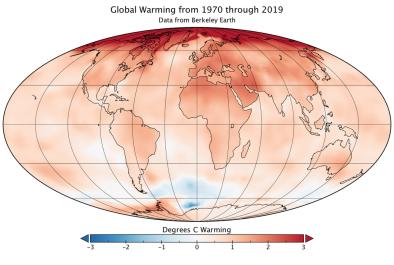Monitoring global carbon emissions in 2021
Study key findings & significance
- Following record-level declines in 2020, near-real-time data indicate that global CO2 emissions rebounded by 4.8% in 2021, reaching 34.9 GtCO2.
- These 2021 emissions consumed 8.7% of the remaining carbon budget for limiting anthropogenic warming to 1.5 °C, which if current trajectories continue, might be used up in 9.5 years at 67% likelihood.
Abstract
Global CO2 emissions have exhibited a rapid increase (Fig. 1). However, embedded within this long-term trend are interannual fluctuations arising from global energy, finance and health crises. For example, during 2020, global lockdowns owing to the COVID-19 pandemic temporarily reduced CO2 emissions1,2. The Carbon Monitor program1,3 — which provides near-real-time daily global CO2 emissions from power generation (29 countries), industry (73 countries), road transportation (406 cities), aviation and maritime transportation, and commercial and residential sectors (206 countries) — offers an opportunity to track the evolution of these CO2 emissions, and in doing so, assess remaining carbon budgets and progress in reaching the Paris Agreement. Here, we document the status of CO2 and fossil CH4 emissions for 2021, revealing a rebound from COVID-related 2020 reductions and a corresponding decrease in the remaining CO2 budget.
Related Content




